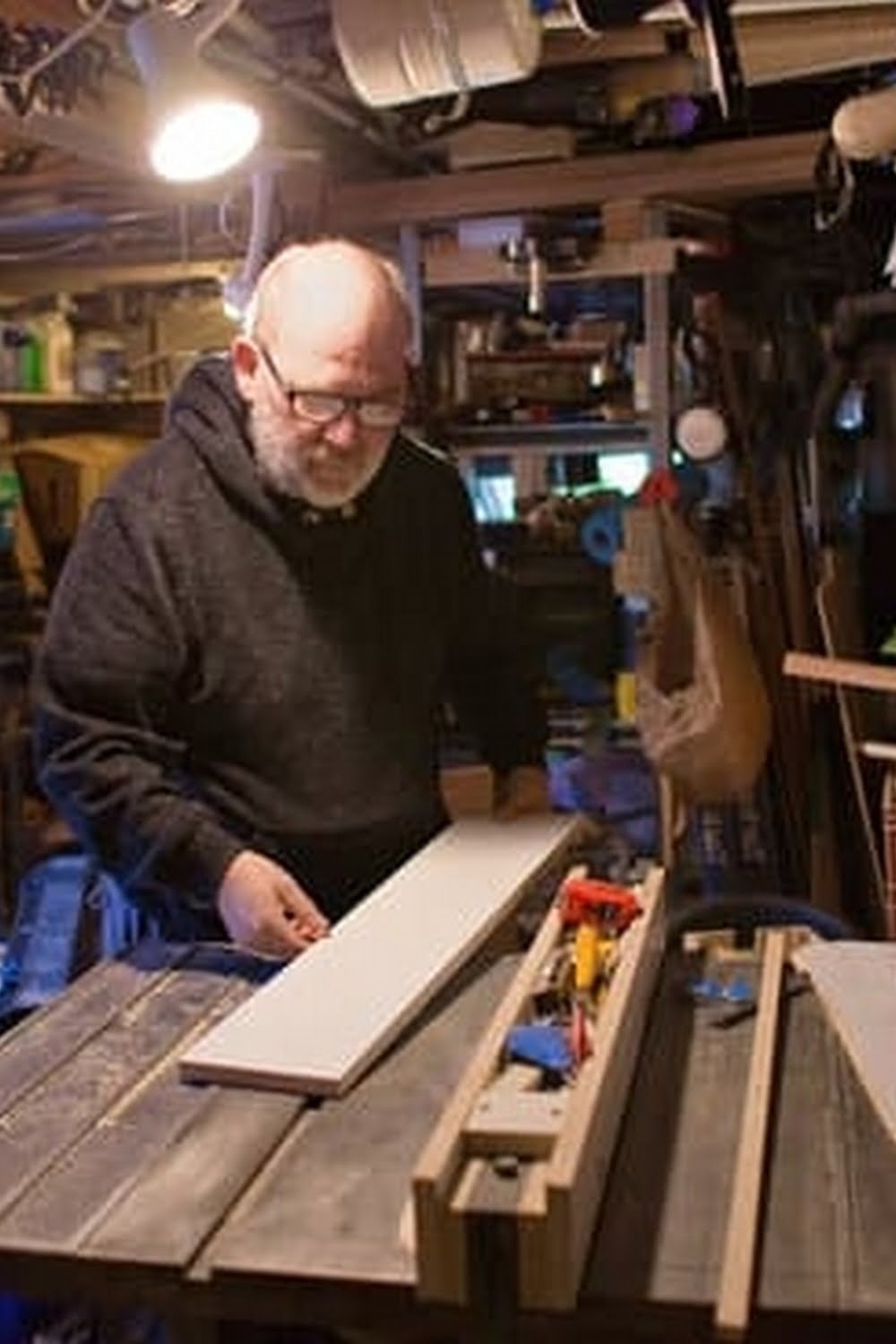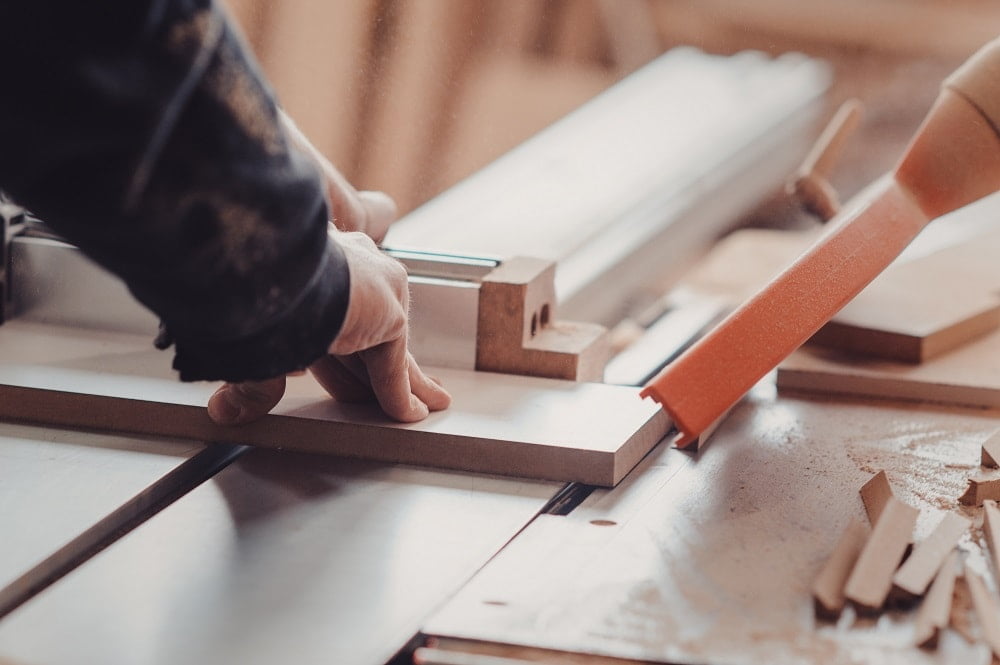Introduction to why a Woodworking Bench is necessary
A woodworking bench is an essential item of equipment for any carpenter, joiner or furniture maker. It allows the craftsman to bring their skill and creativity to life in a safe and comfortable working environment. The bench provides the support which is needed for projects that involve glueing, chiseling, nailing and chopping. It also offers a secure platform for the many tools used in carpentry work such as saws, planes, routers and chisels. Without a sturdy woodworking bench, even the most skilful furniture maker would struggle to make some of their detailed pieces of furniture.
A woodworking bench allows for tools to be secured during operation, helping improve accuracy and safety when using certain tools such as sharp knives or blades. It also helps improve ergonomics as it enables the craftsman to adjust the bench height ensuring they can work comfortably over long periods of time while minimising strain on the body. A properly designed workbench also prevents injury by adding safety features such as well placed tool racks and clamps; these provide stability when operating small power tools which require precision accuracy. In addition, a good quality woodworking bench will ensure that large pieces of timber are held securely while being cut or shaped – this decreases vibrations and reduces slippage which could otherwise cause injury or damage to material being worked on.
Not only is a good quality woodworking bench essential from a practical point of view but it also adds character to any workshop or workspace – offering both functionality and style in equal measure! An additional benefit is that everyone can benefit from using it – from complete beginners through to seasoned professionals – due to its adjustable nature which makes it suitable for use regardless of size or skill level.
Different Types of Woodworking Benches and their Uses
Woodworking benches come in a number of different types, each with its own specialized purpose. One of the most common benches is the sawhorse bench, which is used to support pieces of wood while they are being worked on. This type of bench is highly adjustable, allowing you to put it at whatever height is comfortable for you and your project. Another type of bench is the workbench, which is built specifically for more detailed projects such as cutting or routing smaller pieces of wood. Workbenches generally also have some sort of storage space to allow you to store your tools while not in use and most models come with sturdy vise systems that can clamp pieces onto the surface so they don't move while working. Finally, there are assemble tables, which provide an organized and immobile working surface designed for larger projects that require multiple builds such as furniture making or boat construction. These versions often have pre-drilled holes to make assembly easier and usually have a much heavier build for stability.
Essential Tools and Supplies Needed to Build a Woodworking Bench
Building a woodworking bench is an important and necessary step for any aspiring woodworker. It serves as the foundation of your workspace, providing a stable and comfortable platform to accomplish all sorts of projects. However, before starting out on the project, it is important to equip yourself with the right tools and supplies to ensure that you have every resource needed that can help make the assembly process smoother.
Tools
The essential tools you’ll need to build a woodworking bench include a hammer, saw (circular or jigsaw for cutting large pieces), chisel, drill press, drills with assorted bit sizes, clamps, spirit level (for precise levelling), measuring tape, sandpaper or block plane for smoothing surfaces and edges, sharpening stone for tool maintenance, mortise gauge (to mark joinery), and protective eyewear and gloves. Other optional but useful additional tools include router table and wood plane.
Supplies
You will need various types of supplies including screws and nails (galvanized ones which won’t rust when exposed to moisture), glue (wood glue or epoxy resin glue which forms stronger bond than normal) for stronger joints as well as some outlets if you plan on power tools. Finally lumber in various lengths depending on the design of your bench style; choose woods such as pine or oak which are good quality yet affordable options for building your bench. You should also consider using plywood sheets if you prefer cleaner lines and straighter cuts rather than having planks from solid woods glued together. In addition don’t forget to get finishing supplies like oil-based sealers or beeswax for final touches.
Step-by-Step Guide to Assembling and Setting Up Your Woodworking Bench
1. Decide where to place your bench: Make sure to select an area with adequate space and ventilation. Make sure the surface is level, smooth, and dry before moving forward with setup.
2. Gather required supplies: Typically a woodworking bench should include the following components: frame rails, vise mount, clamping system, worktop/tabletop, apron posts and accessories like removable shelves or tool holders. Your particular bench will also come with instructions for assembly and mounting pieces together.
3. Begin assembly of your bench: Start by joining the frame rails together, attaching clamps from the underside of the table top to secure your desired size and shape workspace or tabletop in position. Join vise mount system hardware and ensure each component piece is firmly connected according to the manufacturer’s instructions. If you purchase an apron post kit attach those components now (making sure all joints are firmly secured) before placing any weight on the workbench itself.
4. Mount any included accessories: Attach any additional accessories to your workbench such as tool holders or removable shelving according to product instruction if included in original purchase material list and/or package directions..
5. Final stage – Finishing Up: Now that your working surface is assembled move onto finishing up tasks like sanding down rough edges (if necessary) before applying a stain-proof coating or wax sealant in order to protect it from moisture damage over time; Don’t forget to buff out surfaces for a more professional look! Once completed you can use your newly assembled woodworking bench!
Quick Tips for Working Comfortably at Your Woodworking Bench
Woodworking can be a fun and gratifying hobby, but working at your woodworking bench for long periods of time can become uncomfortable or even dangerous if you don’t take the proper precautions. Whether you are a novice just getting started in woodworking or an experienced craftsman, here are some quick tips for working comfortably at your woodworking bench:
1. Wear safety goggles when sawing or sanding to protect your eyes from flying debris.
2. Consider purchasing an adjustable stool or chair to sit on while you’re working as this will help promote good posture and help make sure that you aren’t straining any part of your body.
3. Provisionally put your tools in an easily accessible spot on the bench so that they are easy to reach while keeping them out of the way and not blocking important workpieces.
4. Additional lighting is essential; consider installing a task light right above the workbench to make sure you have adequate lighting for all of your activities without creating glare which can strain your eyes.
5. Make sure that there is plenty of space around you so that everything stays organized and is easy to reach. It might even be worthwhile investing in some wall storage to maximize available space on the woodworking bench itself by reducing clutter from tools and other materials lying around it.
6. Finally, invest in a quality pair of gloves and hearing protection if needed; not only will these items keep you protected, but they may even make certain tasks easier than before!
Common Mistakes
When beginning woodworking, it’s important to know the common mistakes that beginners make so that you can avoid them. Common beginner mistakes with a woodworking bench include:
1. Not reading or following directions – This is a common mistake for all types of do-it-yourself projects, but is especially pertinent for making a woodworking bench because if you don’t assemble it correctly, it won’t work properly and may cause you injury. Make sure to read the instructions thoroughly before attempting to build the bench.
2. Forcing too much power or using incorrect tools -Another mistake many beginners make when working on their woodworking benches is using too much force by pushing down and failing to appropriately adjust the tool speed when cutting. This can cause serious damage to both the material and the tools being used, so control your power based on what type of material you are cutting into and also be sure to use the right tools for the job.
3. Failing to keep your workspace clean -It’s important to keep the workspace clean while making the bench because sawdust can prevent a proper fit between pieces during assembly, which could damage not only your project but possibly yourself as well. Additionally, be sure to sweep up any dust and debris at least weekly if possible as part of general safety protocol for any workshop environment.
4. Working without a plan – It’s always important to have a plan when taking on any sort of new project or task, including building furniture such as a woodworking bench or table. Having an organized plan will save time and energy in addition to helping prevent errors in construction due to misreading measurements or using incorrect materials. A comprehensive plan will help ensure success in creating desired results.
Caring for and Maintaining Your Woodworking Bench
Protection and maintenance are essential components of making sure your woodworking bench continues to operate effectively. Taking the time to do a few simple steps each month can help you get an even longer life out of it.
Start by cleaning the top and bottom surfaces of your bench with a damp cloth, using most basic family-friendly cleaners. Next, use a soft, dry cloth to wipe away any excess moisture from the surfaces. You should also make sure to regularly check that all screws and bolts are properly fastened, as even minor loosening could interfere with the good operation of your woodworking bench.
You should also pay special attention to external components which may be subjected to regular wear and tear, such as guide rails or mitre slots on table saws or other tools built into your benchtop. Make sure they have not been distorted in any way due to overuse or misuse as this can affect their performance and accuracy when using them for certain tasks. Also inspect any fences or similar attachments – such as finger constrictors – for cracks and gaps, ensuring that everything is secure. Additionally, ensure the blades and bits are kept sharp for precision cutting purposes; if not replaced in time, this can lead to difficulty working much harder than necessary when performing intricate tasks. Lastly, you should apply a quality finish like wax or oil every three months for extra protection against moisture build-up and grime in order to preserve the longevity of your workbench’s valuable wooden surface.
Conclusion
Woodworking is an incredibly fun and rewarding hobby. Not only can you make useful products for your own home, but you can also create inventive objects for family and friends. You’ll appreciate the satisfaction of having created something with your own hands, and others will be in awe of the beautiful pieces you create. Crafting custom furniture with a beginner woodworking bench gives you the opportunity to really express your creativity, since you have complete control over the design and concept. Additionally, being able to use power tools on a well-made bench allows for quicker projects which saves time and energy. Woodworking requires dedication and perseverance – as with any meaningful hobby – but it is ultimately fulfilling. As such, it’s a great way to spend your free time if you’re looking for something meaningful that brings out the DIY trend within yourself!

Hi everyone! I’m a woodworker and blogger, and this is my woodworking blog. In my blog, I share tips and tricks for woodworkers of all skill levels, as well as project ideas that you can try yourself.





